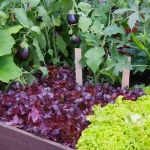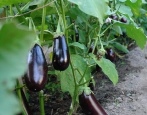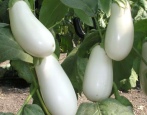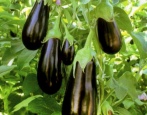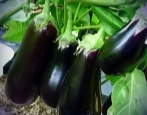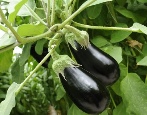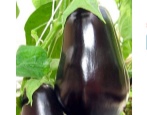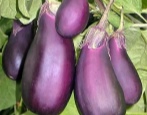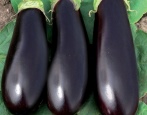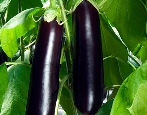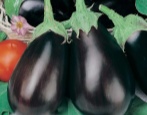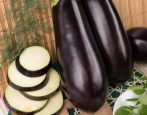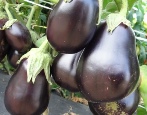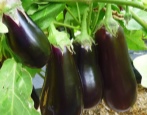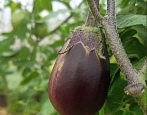
- Authors: Sakata
- Name synonyms: Roma
- Year of approval: 2013
- Growth type: vigorous
- Bush height, cm: up to 200
- Fruit shape: pear-shaped
- Fruit weight, g: 220
- Yield: high yielding
- Fruit color: dark purple
- Keeping quality: good
Eggplant is one of the favorite vegetables that gardeners and farmers are happy to grow on their plots and lands. The main thing is to choose a variety that quickly adapts to climatic conditions and brings good yields. These types include the Roma hybrid, characterized by an average ripening period.
Breeding history
Eggplant Roma is a first generation hybrid created by Sakata Vegetables Europe S. A. S. breeders in 2010. The vegetable crop was entered into the State Register of approved for use on the territory of the Russian Federation in 2013. The vegetable is cultivated in open ground, under film shelters and in greenhouses.
Description of the variety
The eggplant hybrid is a tall plant that can grow up to 2 meters in a favorable environment. The closed bush is endowed with a moderate thickening of green wrinkled foliage, a powerful central stem with an anthocyanin color and pronounced pubescence, as well as a developed rhizome. A notable feature is the absence of thorns on the cups. A huge number of neat fruits ripen on one bush.
Characteristics of the appearance of plants and fruits
Roma eggplants grow aligned, with an attractive presentation. The variety belongs to medium-fruited. The average fruit weight is 200-220 grams, sometimes specimens gain weight up to 300 g. Fruit length is standard 15-20, sometimes 25 cm. The shape of the fruit is pear-shaped or elongated-pear-shaped.
At the stage of technical maturity, the vegetable has a pale burgundy color. Ripe fruits acquire an intense and uniform dark purple color. The surface of the eggplant is smooth, highly glossy, without noticeable irregularities.
Ripe vegetables can easily be transported and can be stored for a long time. For long-term keeping quality, whole and dry vegetables are selected, which are wrapped with dry paper or cloth. So you can store the fruits for up to 2-3 months.
Purpose and taste
The eggplant tastes excellent. The whitish flesh has a tender, fleshy and firm texture. The vegetable has a pleasant taste, without bitterness, with a small amount of seeds.
Ripe eggplants are characterized by a universal purpose - vegetables are fried, stewed, baked, pickled, frozen, and canned.
Ripening terms
The Roma hybrid is mid-season. From the moment the mass shoots appear until the first fruits ripen on the bushes, it takes about 4 months - 110-120 days. Vegetables ripen gradually, so the fruiting period of the culture is long. You can evaluate the taste of vegetables at the end of July. The peak yield is in August-September, but in the southern regions, the crop bears fruit until the frost.
Yield
The yield indicator for the variety is good. With proper agricultural technology, each bush is capable of producing up to 1.5 kg of specimens. On average, from 1 m2 of plantings, you can get from 4.8 to 10 kg of delicious eggplants.
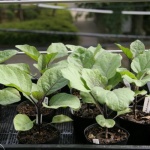
To get a tasty and bountiful eggplant crop, you must first grow strong and healthy seedlings. This culture is considered very capricious, therefore, you need to take care of seedlings when growing at home as correctly and carefully as possible.
Landing scheme
When planting eggplant bushes, you should know the planting rules, observing the density and distance between plantings. It is recommended to have up to 3-4 bushes per 1 m2. Landing is carried out according to the scheme 40x60 cm.
Growing and caring
The vegetable is planted mainly by the seedling method.Planting in a greenhouse or garden bed is carried out from mid-May to early June. For planting in open ground, it is important to take into account the temperature regime, the level of heating of the soil, as well as the likelihood of the return of spring frosts. It is not recommended to plant eggplants in a place where nightshade crops previously grew. The best place would be a ridge where carrots, pumpkins, onions, and legumes grew.
Agrotechnics of eggplant consists of a number of activities: irrigation with settled water several times a week, repeated feeding - 3-4 times per season, fluffing, weeding and mulching of the soil, removing side shoots after the formation of 8 fruits, pinching the top, preventing viruses and insect infestations.
In addition, during the flowering period, small flowers are always removed, which will increase the yield and the ripening time of the fruits. To protect the bushes from evening and night temperature fluctuations, temporary cover with a film will be required.

Planting eggplant is one of the most important stages in growing. When choosing a place for eggplants in your area, it is important to remember that this culture should be in warm soil, constantly illuminated by the sun. The plant is also very fond of spacious, open spaces, since its roots can grow over sufficient areas.


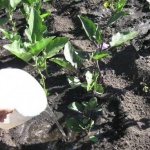
Soil requirements
The vegetable is very picky about the structure and quality of the soil. Plants are most comfortable to grow in loamy or sandy loam soils. The soil should be loose, fertile, moist, air-permeable, and also have a neutral or low acidity.
Required climatic conditions
Roma is a very thermophilic vegetable, therefore it is very susceptible to the slightest cold snaps. The area for growing eggplants should be level, free from weeds, sunny, well-lit and protected from gusty winds and drafts.
Disease and pest resistance
Thanks to its strong immunity, the culture is able to withstand many viruses and diseases - late blight, gray rot. Eggplant bushes are sometimes bothered by pests - the Colorado potato beetle and spider mites, which will help to get rid of nearby plants with a strong aroma, for example, basil, calendula, marigolds.
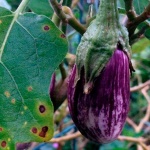
Eggplant is one of the most demanding crops. For its successful cultivation, it is necessary to create optimal conditions, as well as to carry out prevention and fight against diseases and pests. Eggplant often infects both fungal and viral diseases. If treatment is not started on time, you can completely lose the crop.





